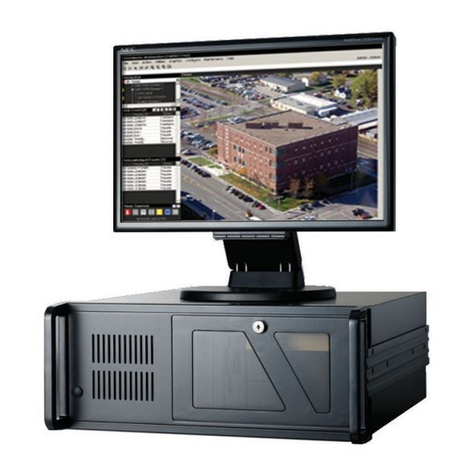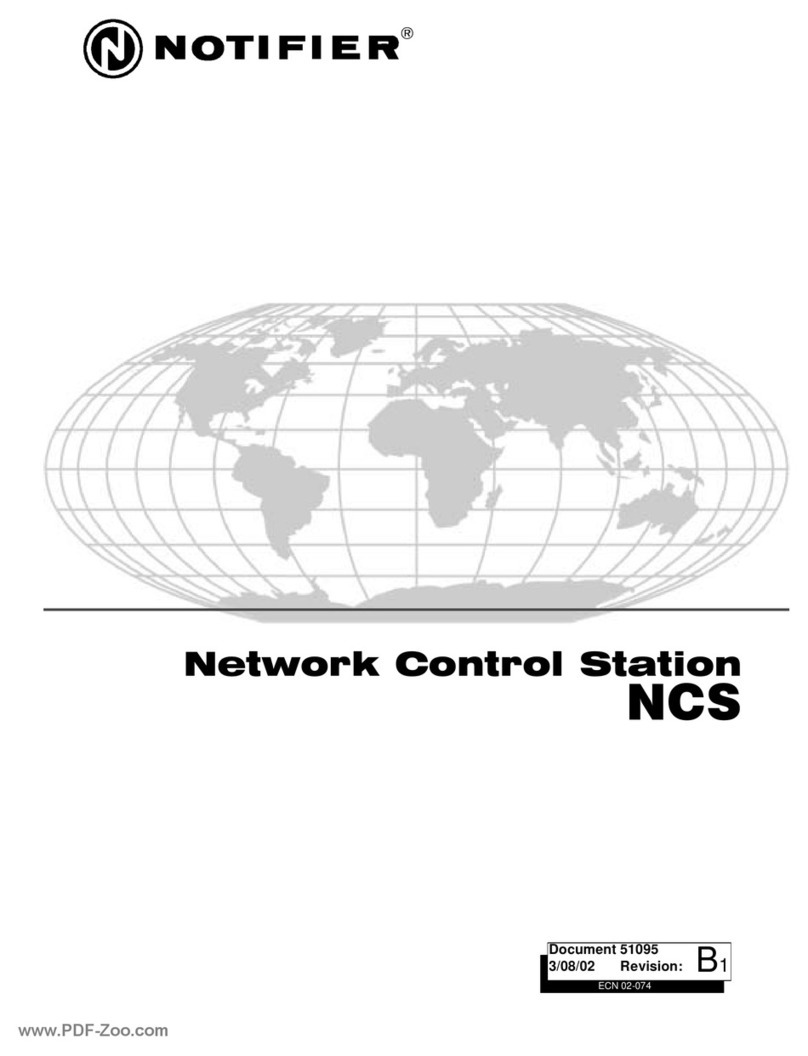PAGE - 6 Installation and operating manual UDS-4
NOTIFIER ITALIA Doc. M--203.1-UDS4N-ENG Rev A. 1 UDS-4_manu
ALARM 1 AND ALARM 2 INPUTS
Specially controlled balanced inputs.
Terminal board inputs for connection to conventional control panels.
Activation of a single input puts the UDS-4N in the "pre-activated condition"; if the signalling does not persist, the panel
returns to the stand-by state.
Simultaneous activation of both inputs puts the UDS-4N into the "activated condition".
MANUAL ACTIVATION INPUT SWITCH-OFF
Balanced input with special control: NO, [NO, NC].
Terminal board input for connection of a device (push button) for manual activation (Quick Discharge) of the switch-off.
When activated, the UDS-4N enters the "activated condition".
This input can be excluded from the exclusion menu.
EMERGENCY EXTENSION ENTRANCE
Balanced input.
Terminal board input for connection of a possible mechanical device to delay the release of the extinguishing agent as
long as it is active. The "Emergency prolongation" status is self-restoring.
MANUAL SWITCH-OFF INPUT ONLY
Balanced input.
Terminal block input for connection of a key switch, if required, to enable the UDS-4N to switch between 'Automatic'
and 'Manual Only' operating modes.
EMERGENCY STOP INPUT
Balanced input.
Terminal board input for connection of an emergency interruption device (Abort); its activation, before the
extinguishing agent release condition is reached, inhibits the discharge of the extinguishing agent. The "Emergency
Abort" status is not self-restoring.
PRESSURE SWITCH INPUT
Balanced input: NO, [NO, NC].
Terminal board input to which an output from a pressure switch can be connected for shutdown control.
Activation of this input during the extinguishing release condition signals that the extinguishing cycle has been
successfully completed.
Activation of the UDS-4N in the resting condition, however, brings the UDS-4N into the "Low Pressure" fault condition
for "Agent Loss". In this condition the shutdown cycle is not inhibited.
FLOW SWITCH INPUT
Balanced input with special control, NO, [NO, NC] and configurable enable.
Terminal board input to which an output from a flow switch can be connected for shutdown control. Its management
can be disabled from the configuration menu (CONF button).
Activation of this input signals that the extinguishing release condition is in effect.
If activated during the resting condition it means that the extinguishing was not initiated by the UDS-4N but by an
external action (could be due to manual activation of the fast flow valve). This feedback puts the UDS-4N into the
"extinguishing release condition".
This input is used to manage the shutdown cycle, when the UDS-4N goes into the "extinguishing release condition,
following the interpretation of the signals from the activation inputs.






























